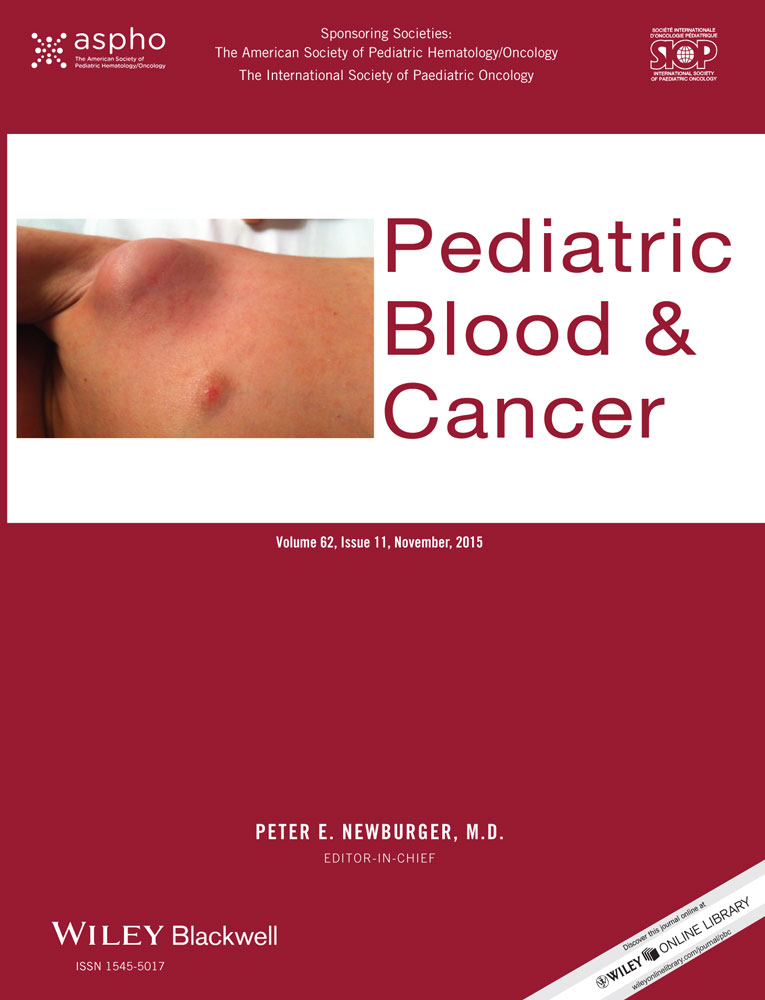Clinical features and outcomes of infants with Ewing sarcoma under 12 months of age
Abstract
Background
Ewing sarcoma peaks in incidence in adolescence. Infants <12 months old have rarely been reported. We aimed to compare clinical features, treatment, and survival of infants <12 months to those of older pediatric patients with Ewing sarcoma.
Procedure
We utilized the SEER database to identify patients <12 months of age diagnosed with Ewing sarcoma between 1973 and 2011. We used Fisher exact tests to compare clinical features and treatment modalities between these patients and patients aged 1–19 years. We used Kaplan–Meier methods to describe overall survival in these two groups.
Results
Of 1,957 patients in the cohort, 39 (2.0%) were diagnosed at <12 months of age. Infants had a different distribution of primary tumor sites, with lower extremity tumors under represented. Compared to older patients, infants were more likely to have soft tissue tumors (81.6% vs. 27.1%; P < 0.001); have primitive neuroectodermal tumor/Askin tumor (61.5% vs. 19.9%; P < 0.001); and have tumors <8 cm (81.0% vs. 53.2%; P < 0.014). Infants were less likely to receive radiation therapy (13.2% vs. 53.3%; P < 0.001). Infants were at increased risk for early death (P < 0.013 by Wilcoxon), though long-term overall survival was not different between age groups (P < 0.25 by log rank).
Conclusions
Ewing sarcoma is rare in infants, with different clinical presentations and treatment approaches. These patients appear to be at higher risk for early death, but long-term survival is similar to older pediatric patients. Pediatr Blood Cancer 2015;9999:1–5 © 2015 Wiley Periodicals, Inc.




